What are the tiny jumping bugs in my house?
Some bugs fly, some crawl, and some jump. It’s less likely that you’ll find the jumping kind in your house, but when you do, it can be very stressful. Getting close enough to figure out what kind of pest you’re dealing with is not only difficult due to their size, but also nerve racking when you’re anticipating the jump. On the East coast, homeowners with jumping bugs usually see fleas or springtails. Other tiny bugs that can easily be ruled out because they do not jump at all are bed bugs and ants.
What do fleas look like?
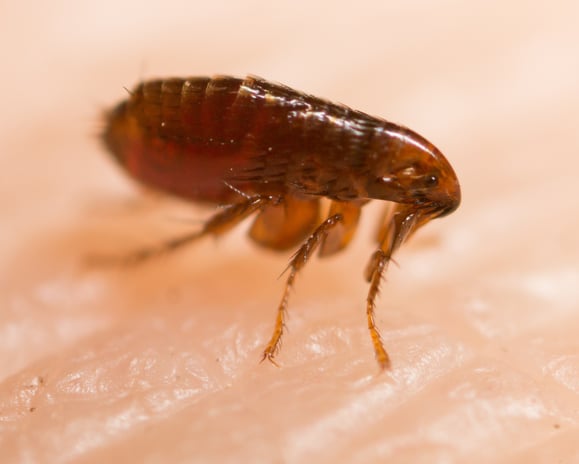
A flea infestation is caused by a host animal unknowingly carrying the fleas indoors. Fleas need a host to survive whether that be a pet or other critters such as mice or squirrels. If you do not have pets and you’re experiencing fleas, it’s frequently the sign of a bigger problem with rodent infestations within the home. It’s paramount that you take measures to eliminate fleas as soon as you see them. The earlier you find the problem, the more likely it will be to get them under control.

Photo Credit: www.budgetpetcare.com
Fleas look like dark peppered spots when you find them on pet fur. Using a flea comb on your pet’s fur exposes any fleas that are hiding and not as easily visible. If you find fleas on your pet, immediate action should be taken by calling your veterinarian.
Another common hiding place for fleas is rugs and carpeting. According to Flea Science, 83% of fleas develop deep within home carpeting. They burrow into the fibers where they can avoid light and low levels of humidity. Once larvae become adults, they jump onto a passing host such as your dog, which is when you begin to see the infestation.
Do fleas have wings?
Fleas do not have wings. According to the National Pest Management Association, fleas “have incredibly powerful legs that can springboard them as high as 8” vertically, which is over 150 times their height. If humans could do this, we would be able to leap over skyscrapers.” When fleas jump, they attach themselves to a host whether it be your dog, cat, or even your own shoes and pant legs. According to the University of Kentucky, pets acquire fleas from kennels, groomers, etc., or from stray dogs, cats or wildlife (especially opossums and raccoons) wandering through the yard. Contrary to popular belief, fleas seldom jump directly from one pet to another.
Could I have springtails?
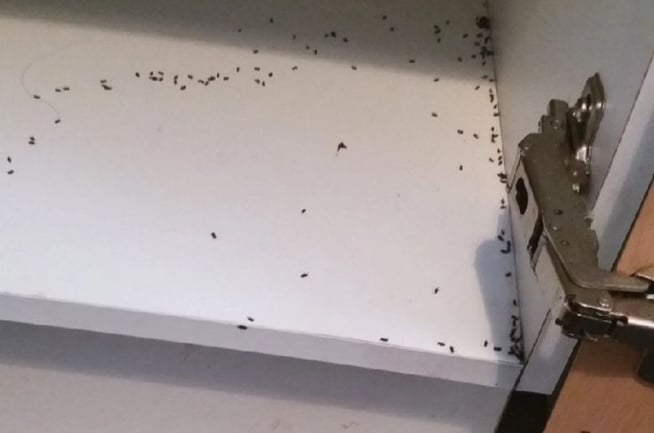
Pictured Above: Springtails infested kitchen cabinet of a homeowner as featured in lisburn.co.uk
Springtails are tiny pests that infest moist areas of your home as well as swimming pools, hot tubs, crawl spaces, mulch, and other outdoor areas. You’ll know that you have springtails when you see large groups of small dark insects that jump. Although springtails are not destructive and do not cause harm to humans or pets, homeowners find them alarming because of the large numbers that occur seemingly out of nowhere. Springtails are found where moisture is prevalent. That’s why you can find them where there is water damage within your basement, kitchen, or bathroom.
What are snow fleas?
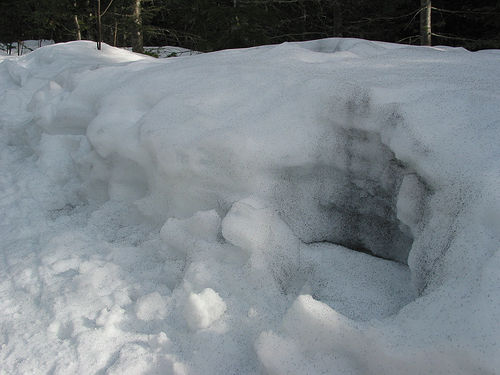
Pictured Above: Large clumps of springtails look like black flecks when in the snow. Photo courtesy of the Ecological Society of America.
Snow fleas just another name for springtails, which are not fleas at all. One of the ways that you can occasionally see springtails is while you’re shoveling snow. They live in leaf litter and soil underneath the snow and look like dirt of black flecks against the white snow when they’re uncovered. These jumping pests are mistaken for “fleas” because they behave in the same way. It’s no wonder that people who don’t encounter springtails in their home refer to them as snow fleas.
Do springtails bite?
Springtails feed on fungi, plat material, and algae. These pests do not bite, transmit human disease, or cause structural damage to homes and office buildings. They’re not as common as other pests because they usually don’t seek out humanmade structures for shelter. Soil, fungi, decaying logs, and under the bark of trees are ideal for springtail breeding.
Pest Control Technology Magazine suggests the following tips to avoid springtail infestations.
- Repair water leaks and other moisture problems
- Remove wet, moldy wood or other moldy items
- Use a fan or dehumidifier to increase air circulation and dry out the area
- Allow the soil in potted plants to dry out between waterings
- Reduce mulch and other materials outside around the foundation
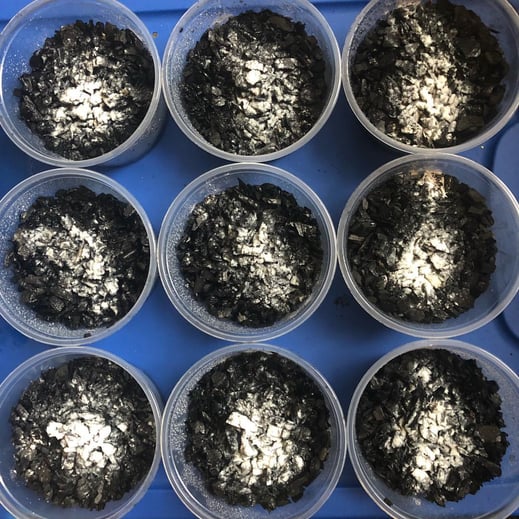
Pictured Above: Springtail cultures being grown by a frog owner featured on deskgram.net
Something interesting to note about springtails is that some people grow or “culture” them on purpose. Springtails are arthropods that are great food for pet frogs and geckos. In such a terrarium, springtails also are useful in consuming mold and waste. You can even buy springtail cultures from amphibian or reptile supply stores online for immediate use or to start growing your own batch.
What are fungus gnats?
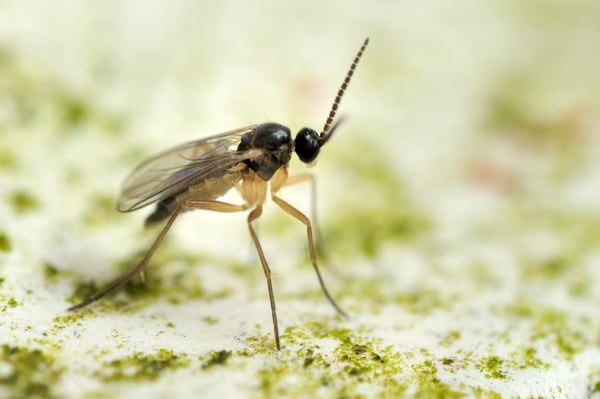
Fungus gnats are small flying pests commonly found indoors, hovering around houseplants. They lay eggs in moist organic debris or potting soil, feeding on the roots of plants. If you find fungus gnats in your home, don’t stress yourself out. Fungus gnats do not cause structural damage, eat plant leaves, or bite. Even though they are relatively harmless, fungus gnats are considered a nuisance by most homeowners that do not want to have to deal with their presence indoors. They live within the top 2-3 inches of soil within a potted houseplant and will remain relatively close to the plan during their lifespan.
Colorado State University Extension provides an interesting and simple way homeowners can confirm the presence of fungus gnats on their own.
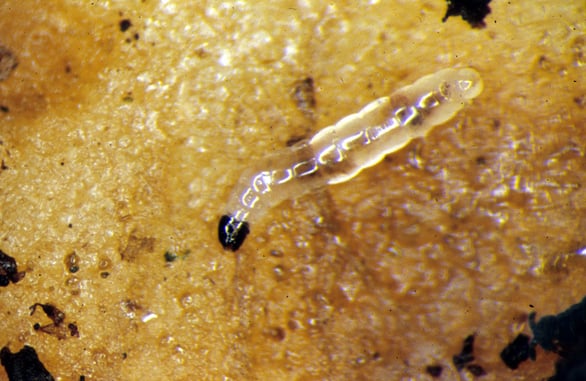
Pictured above: Fungus gnat larvae on potato slice. Credit: Colorado State University Extension
“An effective means of detecting the presence of fungus gnat larvae is to insert 1/4 inch slices or wedges of potato into the growing medium. Larvae will migrate to the potato and start feeding within a few days. The potato slices should be turned over to look for larvae present on the underside.”
Not ready to experiment with potatoes? Give Cooper a call or fill out the contact form on this page to schedule a fungus gnat inspection with our fly and gnat specialists.
Why do I have fleas, springtails, and gnats?
The primary cause of any pest infestation is that they are searching for food or water. In the case of fleas, they are latching onto a host source such as your dog or cat. Springtails, on the other hand, are chasing after moisture to live within. Fungus gnats, in particular, are looking for fungi to eat. As gross as that sounds, these tiny pests usually find what they’re looking for in moist areas such as overwatered house plants. They breed in the soil and survive on these conditions.
Will they go away on their own?
Fleas will not go away if the infestation is ignored. In fact, the longer the issue isn’t addressed, the more time the fleas will have to reproduce. Check your dog for fleas on a regular basis. Remember, your dog can get fleas from a multitude of places including groomers and kennels. Fleas carry diseases that can cause harm to your health. Watch the video below from Banfield Pet Hospital to learn how to check your dog for fleas.
How can Cooper help?
Flea control and prevention are included within our Home Intensive Plan. This is our most popular service for homeowners. The service plan includes four preventive services per year. Each service is unique and will be accompanied by a detailed 30-point inspection report with detailed findings as well as providing you with important recommendations for your home. Each year you will receive three exterior maintenance services (March – November) and one interior service (December – February). The winter service will focus on the interior of the structure and is geared towards rodents and other pests that may live within the structure.
Cooper's Home Intensive Plan is now available to purchase online! Schedule and pre-pay online for fast and contactless checkout. Click the button below to get started!
Flea Control Program
Our Flea Control Program is designed to reduce the number of fleas present within the home and interrupt the breeding of the fleas to prevent a breeding infestation from continuing within the home. When a Cooper technician visits your home, they will treat the floor areas, baseboards, upholstery furniture, curtains, and other areas where the fleas can rest and breed.
One-Time Springtail Service
If you are experiencing springtail activity in your home, please call us directly at 1-800-949-2667. We provide a One-Time Springtail Service to target active springtail infestations. If you’re looking to prevent springtails before they come into your home, use the tips in our blog post by clicking here.
Fungus Gnat Inspection
Fungus gnat infestations require an inspection by one of our gnat and fly specialists. This inspection aims at finding the breeding source of the infestation. Once our specialist locates the breeding source, they provide recommendations for how to fix or remove it. Fly, and gnat inspections are charged hourly at a rate of $125 per hour with a minimum of one hour. Please call our office to schedule an inspection of your home.


